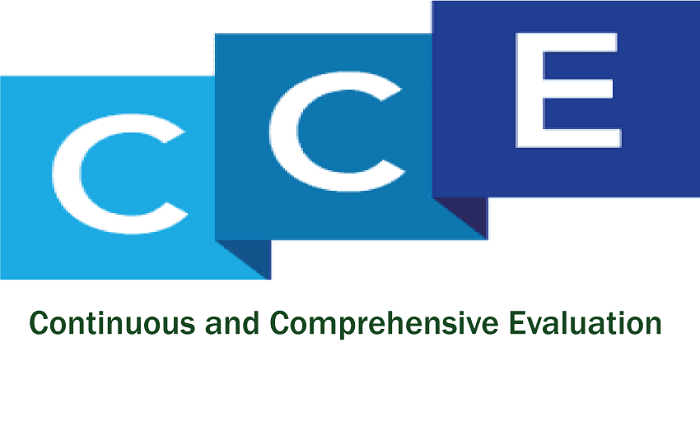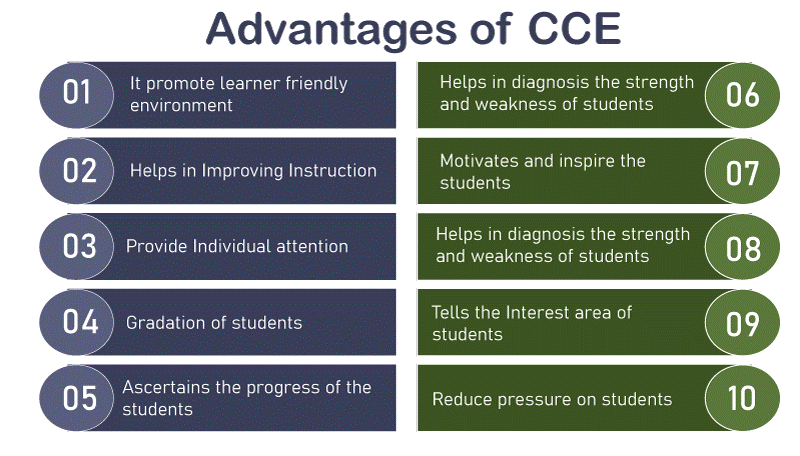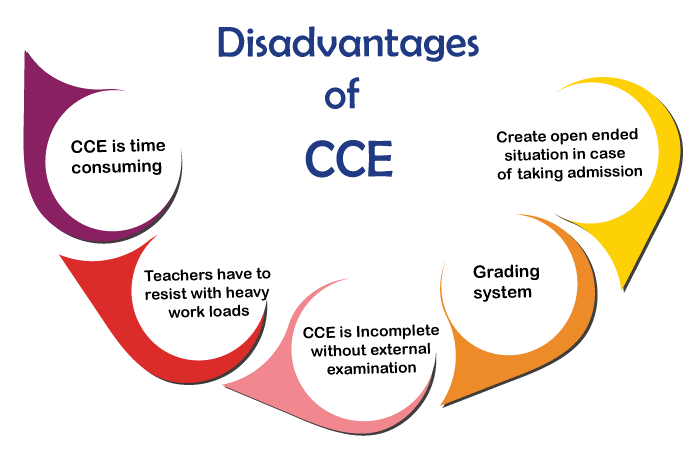Advantages and Disadvantages of CCE
Introduction
Education is the only key to success in every area of life, whether you are positioned anywhere. India is a developing country, raising its bar in the education field to educate every citizen so that they become independent and earn their livelihood. Setting this as a goal Indian government has prompted various schemes in the field of education.

Education and knowledge can be attained by self-learning or with the help of teachers but only when reached in a structural way lacking in the Indian education system. Therefore, to make a structural education system and map the learning goals with instructional delivery, the government introduced CCE (continuous and comprehensive evaluation) under the Right to Education Act 2009.
The RTE Act 2009 allows free and compulsory education for all children aged (6-14) in India. Trained and qualified teachers are appointed to raise the standard of education under RTE Act 2009.
Only theoretical knowledge couldn't make a child all-rounder and show his talent. It's okay that a child weak in studies can't be concluded weak in every aspect may be the child is good in sports and various other fields. To enhance every area of child learning, school administration and teachers are adopting various ways to make students eligible in every field, whether it's academics, sports, or other activities. For this purpose, CCE was established and adopted by them. It is the method in which both teaching and evaluation integrate to test those skills and abilities that can't be tested through written examination. Let's understand what CCE is.
CCE - Continuous and comprehensive evaluation is the combination of three individual terms with their meaning such as:
Continuous refers to the regularity in assessment as student development is a continuous process that needs to be accessed continuously.
Comprehensive refers to covering scholastic and co-scholastic aspects of students' development and growth.
Evaluation is a broad term that marks or judges learning domains, including the cognitive, affective, and psychomotor domains. Evaluation is the measuring of the child's activities on different parameters.
In short, "continuous and comprehensive evaluation is a school-based evaluation system adopted by school administration and teachers to evaluate all aspects of student activities related to its development."
"Continuous and comprehensive evaluation is the regular assessment of the student covering all the facets of education. It is an essential part in development phase of student as it has two fold objectives continue evaluation of child and assessment of broad based learning and behavioural outcomes."
It includes various aspects such as:
- Learning, speaking, and writing capability of the student.
- Enthusiasm and ability to participate
- Leadership quality
- Participation in the complete fieldwork and project work
- Neat, tidy, and physically fit
- Take part in seminars and discussions
- About the nature of students, including emotional, helpful, supportive, selfish, immature, mature, etc.
- Interested in extracurricular activities
The comprehensive and continuous evaluation can be conducted with three kinds of assessment: formative assessment, summative assessment, and co-scholastic assessment.
| Formative assessment |
The assessment of actual learning or live learning is based on different parameters. Formative assessment is not limited to random quizzes, tests, observations, role play, discussions, and debates. It does diagnostic testing that includes formal and informal assessment procedures during the learning process conducted by the teachers to alter teaching and learning activities to improve student achievement. It is the best way to correct and detect the assessment process and provide qualitative feedback for students and teachers based on their performance. |
| Summative assessment | Assessment takes place at the end of the term or annually to showcase the student's overall performance within the academic year. It is conducted with formal tests or final written exams and a sum up of the internal exam results that measure the student and teacher progress over an extended period. |
| Co-scholastic assessment |
This assessment of fine arts, computers, skills, music, physical fitness, environmental education, and personal characteristics occurs. The co-scholastic assessment takes place through competitions, quizzes, and group activities. |
So overall, comprehensive and continuous evaluation can be conducted with these modes like a review of books, MCQs, classroom teaching, quiz, group discussion, semi-surprise test, role lays, bibliography, group discussions, unit tests, oral tests, lab exercises, assignments, classroom teaching, literature review, report writing, playing games, PowerPoint presentation, etc.
Aims of CCE
Here are some of the aims of comprehensive and continuous evaluation:
- To all-round development of personality of the child
- Take care of students with special requirements in the process
- Improve the teaching-learning process
- Give feedback to teachers to improve their teaching and remove the obstacle to teaching
- Improve the existing examination system
- Reduce the exam fear
- Open tremendous opportunities to students and teachers in different areas
- Special children or special ability children are taken care of in CCE
- Help in reducing the non- academic sort of problems
- Teachers can reinstate all the goods things in the past
- Solving the problem of mass copying in the examination
- Giving sports equal importance same as academics.
- Solving the problem of indiscipline in students
- Teachers have full knowledge about their students in every aspect
Advantages of CCE
Being advantageous to Indian Education System, CCE is implemented for having benefits such as:

- It promotes learner friendly environment
CCE also promotes a learner-friendly environment for the students and teachers because it focuses on the individual's overall development rather than academics. CCE provides fear-free learning in school by having a flexible environment and integrating it into a classroom activity.
- Helps in improving instruction
In teaching, the teacher makes use of various teaching aids and teaching methods that were tested in the evaluation process. It brings out the weakness of syllabus and curriculum based on which these can be improved and reformed.
- Providing attention to individual
Every individual or student is unique, with their area of interest and way of learning. Only some learn similarly because everyone's I.Q level is different from each other. Some are bright, intelligent students, some are average in learning, and some are weak or slow learners. CCE helps the teacher to identify the students and pay attention to the individual.
- Gradation of students
With the help of CCE, teachers can give students a grade in different categories. Evaluation makes teachers decide which student is apt for what level. Summative tests are conducted at the end of the academic session to evaluate teachers' and students' education.
- Ascertains the progress of the students
With the help of evaluation, teachers can create an index of students' achievement. It keeps a record of the progress made by a student during a specific period and of what quality. It helps track the student's progress and find whether progress is going in the right direction. CCE analyzes whether the desired changes are taking place among students and what their effects are.
- Help in the diagnosis of the strength and weaknesses of the students
A teacher can guide students for their betterment if he knows their strengths and weaknesses. CCE help teacher diagnoses the weakness and strength of child during their day-to-day activity. Teachers evaluate the students and make them aware of their weaknesses and strengths that help them build their future.
- Motivates and inspire the students
Usually, students fear studying or don't wish to study, but tests motivate them to study and take studies seriously. The subjects whose tests are not conducted or subjects are not obligatory to pass students won't take them s seriously. Tests motivate and inspire students to focus on their studies and achieve their goals.
- Helps in attaining aims
The one motive of education is developing the child's overall personality, which can be achieved by attaining all the learning objectives. Evaluation helps the teachers in making and realizing how much teaching is successful.
- Tells the interest area of students
CCE touches every area of the student (academic or co-scholastic) that help in indicating the interest of students in a particular subject, sport, or other activities. In the present CCE system, emphasis is given to vocational and educational guidance. Various aptitude, achievement, intelligence, and interest tests are conducted for better clarity of interest.
- Reduce pressure on students
CCE helps reduce students' academic stress by allowing them to choose subjects based on their interests. They make students feel relaxed, not under pressure, and gain academic ability.
Disadvantages of CCE
If advantages are there, then it's obvious of having the disadvantage of the anything therefore, the disadvantages of CCE are as follows:

- CCE is time-consuming
As CCE is a continuous process, it starts with the student's academic session and continues till the last of its learning. It takes lots of time for teachers to analyze every student activity and remark on them properly. Students improvise with time; there is no time limit.
- Teachers have to resist heavy workloads.
CCE continuously evaluates individuals throughout the session in all fields, including academic and co-scholastic, where teachers must be attentive and work regularly. Teachers notice and remark on every student activity and use different teaching methods with teaching aids to enhance the learning process. Teachers have to work continuously, which increases their workload.
- CCE is incomplete without external examination
Rather In CCE, regular assessments are conducted via various tools like debates, competitions, quizzes, and many more. Still, the final result is complete with the student's final or external academic examination. That analyses them and makes them eligible for the next standard.
- Grading system
It is one of the major disadvantages of having CCE in the education system as it implements grading. The default is that students scoring 90% or 95% will attain A* grade. It's unfair for the student to score higher marks. It reduces the competitive essence among students, and lower marks students tease the higher-scoring students.
- Create an open-ended situation in case of taking admission
CBSE boards and state boards use the CCE system for making the student learning process and conducting the exam for Standard X. They follow the marks system and percentage of marks in each subject in which percentage and percentile are not comparable.
In all the subjects, grades are provided, and an average percentile is provided (0-9) called CPGA. This creates an open-ended situation for school administration at the time of admission for the standard XI and those seeking admission from CBSE to other boards.
Conclusion: In the education system, CCE is considered and proven as a useful technique for students and the teaching-learning process in the classroom. It came into existence to improve the learning and teaching aspects to increase the interest and belief of students in studies.
Academic proficiency gives an equal platform to sports and other activities that help build an individual's overall personality. It elevates the stress of children and parents by establishing a better learning environment for students.
Overall, continuous and comprehensive evaluation reforms the Indian System of Education to create good citizens, sound health, desirable qualities besides excellence, and appropriate skills. CCE equips the teachers with skills and competencies of evaluation (with the teaching-learning process).
The advantages and disadvantages of comprehensive and continuous evaluation give you a broader understanding of education system.
|



 For Videos Join Our Youtube Channel: Join Now
For Videos Join Our Youtube Channel: Join Now










